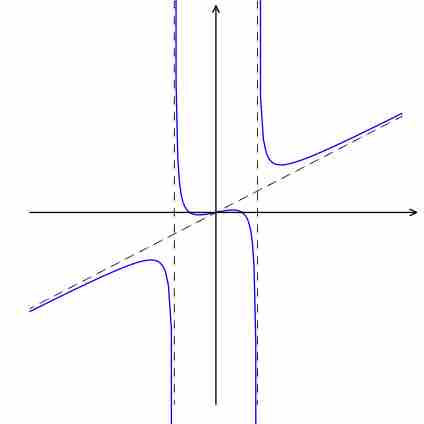Finding the $x$ -intercepts of Rational Functions
Recall that a rational function is defined as the ratio of two real polynomials with the condition that the polynomial in the denominator is not a zero polynomial.
An example of a rational function is:
Rational functions can be graphed on the coordinate plane. We can use algebraic methods to calculate their
For any function, the
In the case of rational functions, the
In order to solve rational functions for their
Example 1
Find the
Set the numerator of this rational function equal to zero and solve for
Solutions for this polynomial are
Example 2
Find the
Here, the numerator is a constant, and therefore, cannot be set equal to
Example 3
Find the roots of:
Factoring the numerator, we have:
Given the factor
Let the second factor equal zero, and solve for
Thus there are three roots, or
